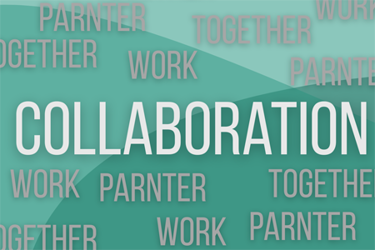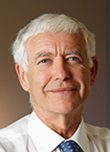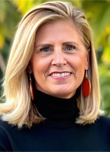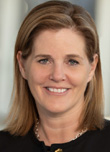Celebrating Clinical Trials Day, Part 3: Making The Most Of Resources
As told to Abby Proch, executive editor of guest columns, Clinical Leader

Finding the right partner — be it a consultant, CRO, or other supporting vendor — is a perennial topic of conversation. There are never enough case studies, anecdotes, or words of wisdom to illustrate not only the importance of partnership but also the art of doing it well. And so, it wouldn’t be a proper Clinical Trials Day 2025 recognition without highlighting the importance of selecting the right resources — internal or external, human or machine. When asked, "What is one challenge that you've successfully overcome as a clinical research professional, and how did it impact a specific trial or contribute to the wider industry of research?,” these leaders had plenty of partnership and outsourcing wisdom to share.
 Peter A. Jones, Ph.D., D.Sc. hon, President and Chief Scientific Officer, Van Andel Institute, and co-leader, Van Andel Institute—Stand Up To Cancer Epigenetics Dream Team
Peter A. Jones, Ph.D., D.Sc. hon, President and Chief Scientific Officer, Van Andel Institute, and co-leader, Van Andel Institute—Stand Up To Cancer Epigenetics Dream Team
“As a basic scientist deeply committed to clinical translation, one of the greatest challenges I faced was quite literally how to move promising lab discoveries into clinical trials. We had strong data that suggested pairing epigenetic medications with immunotherapies and other existing drugs could be a one-two punch against cancer, but we needed partners to move these ideas forward. In 2014, we established the Van Andel Institute–Stand Up To Cancer Epigenetics Dream Team, which brings together leading scientists, clinicians, and companies to design and implement cancer clinical trials nationally and internationally.
Through centralized administration and collaborative contracting, we’ve created an efficient and robust pipeline for evaluating potential therapies and supporting the most promising ones through rigorous clinical trials. This team science approach can be a powerful framework for enhancing collaboration, maximizing resources, and optimizing process — all in service of helping people and treating cancer through leading-edge trials.
The big takeaways in regard to building a team is this: network as often as you can. Talk about big ideas. Find collaborators with resources and skills that complement and expand your own. Start connecting with subject matter experts early and often. Setting up a big team is a lot of work but if done right, it can be an immensely fruitful endeavor.”
 Donna Libretti-Cooke, JD, Kits4Life
Donna Libretti-Cooke, JD, Kits4Life
“The life sciences community faces challenges with the disposal of quality, usable surplus medical supplies and equipment after the closure of clinical trials. The practice results in waste, is burdensome for sites, and incurs expenses for sponsors. Overcoming this challenge is evident with the growth of Kits4Life — an initiative within MedSurplus Alliance (a program of The Task Force for Global Health) — to 14 sponsor pharma and biotech organizations actively donating to Kits4Life, with six of these also contributing in Australia. This cross-collaboration has enhanced access to critical supplies for those in need, fostering sustainable practices within the life sciences sector. Since 2020, donations have impacted over 1.6 million lives. Our vision is for this innovative approach to become an industry standard, bridging the gap between surplus management and global health needs.”
 Jennifer Sheller, Senior Vice President and Head of Global Clinical Trial Operations at Merck
Jennifer Sheller, Senior Vice President and Head of Global Clinical Trial Operations at Merck
“The toughest part of clinical research isn’t protocol design or data collection; it’s building a workforce that’s equipped and empowered to deliver. Clinical research associate turnover rates have been reported as high as 30% in the U.S., with similar rates noted globally, which is a major disruption to this important work. Clinical research is fast-paced, high-pressure work, and without meaningful ongoing investment in our people, we lose them.
At Merck, we’ve made workforce development a top priority. This goes beyond training modules, with a focus on mentorship, hands-on experience, leadership development, and growth opportunities. We give early-career professionals a clear path forward and, importantly, a reason to stay.
If we want clinical trials that are smarter, faster, and more innovative, we need a workforce that embodies those same traits. This only happens when companies treat workforce development as a core part of their clinical strategy.”
 Kristen K. Buck, MD, Executive Vice President of R&D and Chief Medical Officer, Lisata Therapeutics
Kristen K. Buck, MD, Executive Vice President of R&D and Chief Medical Officer, Lisata Therapeutics
“One of the most significant challenges I’ve faced as a drug developer in today’s economic climate is the persistent struggle to secure adequate funding to rigorously evaluate novel clinical-stage assets. Limited financial resources can strain the scope and breadth of clinical study design, particularly when exploring innovative therapies like our selective tumor-penetrating peptide technology.
By strategically leveraging research collaborations with foundations and academic institutions, my team successfully created a global research network that maximized resources while maintaining scientific rigor. Despite rising costs and economic uncertainty, this approach has enabled us to remain a small, capitally efficient biotech while advancing our investigational drug (certepetide) across multiple solid tumors, generating encouraging clinical data that might otherwise have remained unexplored.
This issue isn’t isolated to oncology. Countless promising studies unfortunately stall due to insufficient capital, delaying potential breakthroughs. Our experience demonstrates how innovative partnerships can overcome funding limitations while advancing treatments for patients with difficult-to-treat cancers. This model of resource optimization offers a blueprint for the wider industry that has the potential to accelerate development timelines for life-changing therapies.”
Interested in what clinical research experts had to say about their experiences in other areas? Check out Part 1: Putting The Patient First and Part 2: Trial Optimization In Action.
